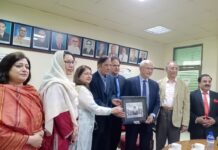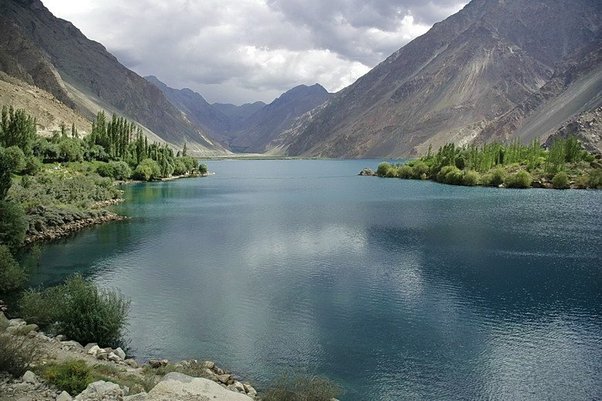Azad Jammu and Kashmir is a region administered by Pakistan, part of the larger Kashmir area, which has been a source of conflict between India and Pakistan since the partition of British India in 1947. Located in the Himalayan region, AJK borders Indian-Occupied Kashmir to the east, and the Pakistani provinces of Punjab to the south and southwest, and Khyber Pakhtunkhwa to the west. AJK has its own president, prime minister, legislative assembly, and high court; however, Pakistan retains significant influence over defense, foreign affairs, and economic policies. The economy of AJK is mainly driven by agriculture, services, tourism, and remittances from Kashmiris living abroad, and the region holds substantial potential for hydropower generation due to its abundant water resources.
The primary issue concerning AJK is the broader Kashmir dispute. After India gained independence, the Maharaja of Kashmir chose to accede to it. This decision sparked an armed rebellion, leading to the intervention of Kashmiris with support of Pakistani forces. The 1949 ceasefire divided Kashmir into IOK and AJK. This dispute has resulted in several wars between India and Pakistan and continues to be a major point of disagreement. The people of AJK have their own visions for the future, with the majority supporting accession to Pakistan. The aspiration for self-determination and the right to shape their own destiny resonate strongly among Kashmiris.
The disparity between AJK and Indian Occupied Kashmir clearly highlights the impact of India’s oppressive policies in the region. The international community must pressure India to respect human rights, end the occupation, and allow the Kashmiri people to determine their own future. The superior development indicators in AJK demonstrate Pakistan’s prioritization of AJK’s development and progress over other parts of the country. The Kashmiris, particularly those in AJK, recognize and appreciate Pakistan’s significant contributions and reject all propaganda and misinformation intended to sow hate and despair among the people
The region’s history is intricate, characterized by ethnic, religious, and political strife. India’s administration of IOK has faced opposition from various Kashmiri groups, resulting in decades of armed conflict. Human rights organizations and global bodies have reported significant human rights violations, with numerous civilians, including women and children, being killed by Indian security forces. Many Kashmiris have vanished without a trace, while detainees have faced severe torture and ill-treatment. A large number of Kashmiris remain in custody without trial, and rigid curfews and lockdowns have severely limited freedom of movement and expression. Allegations of sexual violence against women by Indian security forces also persist. The ongoing hostilities and human rights violations have inflicted substantial suffering, displacement, and economic challenges upon the Kashmiri people. The psychological impact of violence and uncertainty has further burdened the civilian population. The international community has raised significant concerns, with human rights organizations and governments calling for independent investigations. Nonetheless, India dismisses these appeals, maintaining that the situation is a domestic issue.
Conversely, in AJK, the population enjoys the freedom to live and work throughout Pakistan without fear for their safety and property. AJK is a key component of Pakistan. The country has consistently offered political, diplomatic, and economic assistance to the people of Kashmir, grounded in historical, political, and humanitarian reasons. Pakistan has actively raised the Kashmir issue on international platforms, advocating for the Kashmiri people’s right to self-determination. It has provided steadfast moral and political support for Kashmiris, acknowledging their unique status and aspirations. Additionally, Pakistan is responsible for the defense and security of AJK, acting as a protective barrier against potential threats.
Significant investments have been made in AJK’s infrastructure, including roads, bridges, hospitals, and educational institutions. Various financial aid and development initiatives have been implemented to enhance AJK’s economy and elevate living standards there. Pakistan has worked alongside AJK to tap into its hydropower potential, fulfilling the energy requirements of both regions. The country has welcomed millions of Kashmiri refugees fleeing Indian atrocities, offering them shelter, education, and healthcare. Furthermore, Pakistan has provided assistance to AJK during natural disasters, facilitating relief and rehabilitation efforts.
The Pakistan Army has played a crucial role in protecting AJK. Acting as the frontline against Indian aggression, it has also made significant contributions to its development. The strong presence of the Army along the Line of Control (LoC) has deterred Indian aggression, preventing large-scale incursions and safeguarding the civilian population. It has been actively involved in counter-terrorism operations. It maintains vigilance over the LoC to prevent infiltration and cross-border terrorism. Beyond its military duties, the Army has been a driving force for development in AJK, playing a key role in constructing roads, bridges, schools, and hospitals. In times of natural disasters, the Army has led rescue and relief efforts. It has also established educational institutions and medical facilities. Through various civil action programs, the army has engaged in community development initiatives that empower local populations.
Some anti-state elements propagate misleading information suggesting that AJK lags behind both Pakistan and Indian Occupied Kashmir in several key indicators, which is completely inaccurate. The data clearly demonstrates that the conditions and statistics for AJK are significantly better than those for Indian Occupied Kashmir and Pakistan. With a population of 241.49 million in Pakistan, AJK’s population stands at approximately 4.45 million, accounting for 1.8 percent, and 2.45 million, or 1.01 percent, when excluding the diaspora. A population growth rate indicates a more favourable economic and educational profile, although it also places additional pressure on the economy, job market, and housing.
The existing road network spans 8,865 km, giving AJK a road density that is double that of Pakistan and superior to that of Indian Occupied Kashmir. The 13th Amendment (2018) transferred financial and legislative powers from the AJK Council to the AJK Legislative Assembly, enhancing autonomy in alignment with other provinces. While the population of AJK is smaller than that of District Rawalpindi, its administrative structure and civilian government are comparable to those of a province.
AJK has a road density of 0.66, compared to 0.32 in Pakistan and 0.52 in Indian Occupied Kashmir. The literacy rate in AJK is 76.8 percent, in contrast to 62.3 percent in Pakistan and 67 percent in Indian Occupied Kashmir. The school-to-pupil ratio in AJK is 1:49, while it is 1:16 in both Pakistan and Indian Occupied Kashmir. The teacher-to-student ratio stands at 1:7 in AJK compared to 1:44 in Pakistan and 1:20 in Indian Occupied Kashmir.






















